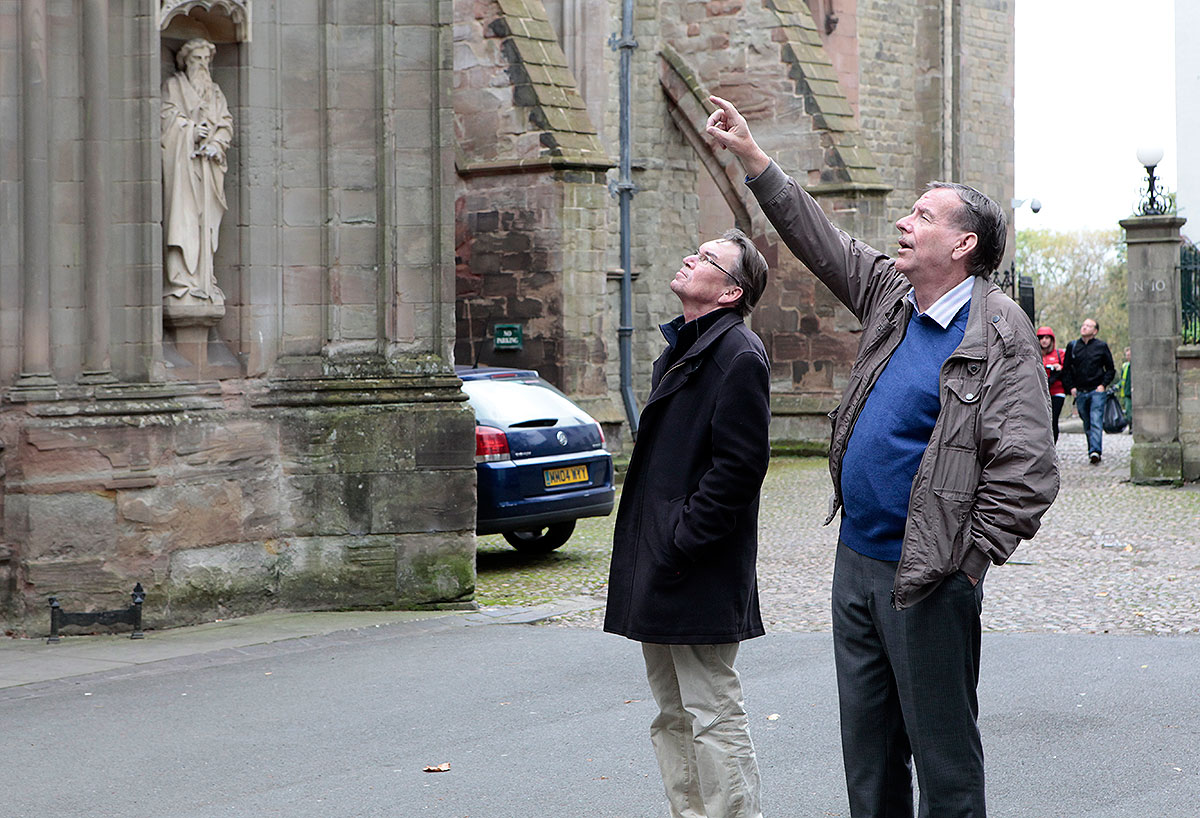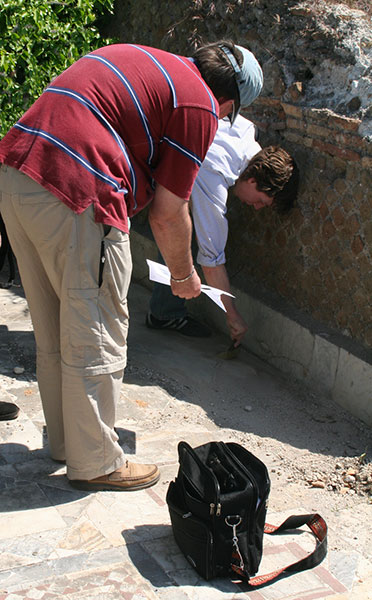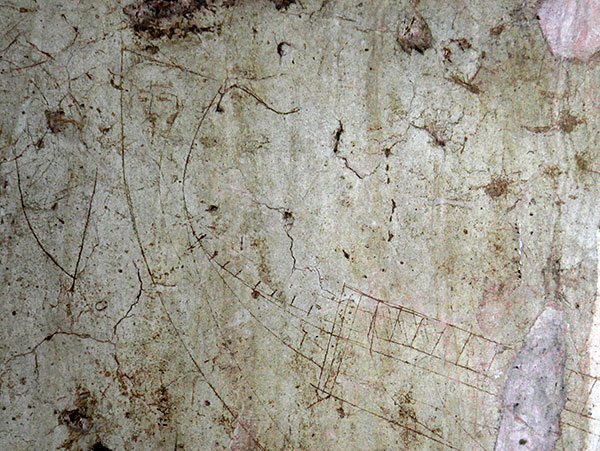
An important part of the website www.ostia-antica.org is the section 'Graffiti', in which all graffiti in Ostia are being collected and documented, including photographs and, as far as possible, interpretations. This work started almost twenty years ago. The initiators were Jan Theo Bakker from the Netherlands, the owner of the website, and Eric Taylor, an English teacher with an incredible passion for Ostia. Eric was doing the fieldwork, searching carefully on every wall for each trace of a graffito and made photographs of them. Jan Theo collected the pictures, described them and put them into a database on the website. After twenty years Eric stopped because of old age, but had already researched a large part of Ostia (read his own article about his work at the bottom).

A couple of years after Eric’s retirement, Jan Theo watched the Graffiti-database again and, aware of the fact that the walls of Ostia worsened very rapidly through all sorts of circumstances, realised that sooner or later these photographs would be the only evidence of many messages from ancient inhabitants on the walls of Ostia. The photographs became more and more important. Most of the pictures, however, were made with an analogue consumer camera and didn’t always show the details you could see with your eyes. Time to try to make better photographs with modern, sophisticated equipment.
In 2013, following the example of the Pompeii and Herculaneum Graffiti Project, Jan Theo started to look for volunteers for making new photographs of the graffiti Eric had found. He posted a call in his Facebook-group and soon there were found enough volunteers to do the job. The Ostia Graffiti Project was born.
Eric, now retired, had done much preparatory work all these years and therefore Jan Theo thought that it was a good idea to tell the story of this remarkable volunteer. Together with the editors of Roman Ports he decided to make a video-interview with Eric. This interview took place on Saturday the 22nd of October in Eric's hometown Worcester, England.

Presentation by Eric Taylor (from www.ostia-antica.org)
If I was applying for a job, and the job description stated "... familiarity with Latin, Greek, epigraphy, legal sources, architecture, the history of art, religion, geology and so on and so forth is required ...", I would definitely not get called up for interview. Why? Because I am a microbiologist (and soon to be a retired microbiologist).
So, why is a microbiologist interested in Ostia, graffiti and the mint? In 1972 I started working at my present college and met a colleague with the great old English name of Arthur Charles Kitchener Fear. He sounds like, and most definitely is, a character. He has degrees in Zoology and in Archaeology and has probably been to every short course in Archaeology that Bristol University has ever put on. Arthur took part in the landings at Salerno towards the end of the last war and marched past Vesuvius during its last eruption.
For many years he made an annual "pilgrimage" to Marseilles, Rome and Sorrento where he stayed with a family with whom he had been billetted during the latter part of the war. My first holiday abroad was also to Sorrento (24 hours on the train), but I didn't need guide books etc. as Arthur provided everything that I would need for my first visit to Pompeii. I had a card from Arthur at Christmas - unfortunately his travelling days are over. Nobody will ever see him again in Pompeii, or Rome, or Ostia in his charcoal grey suit, white shirt and tie and black Oxford shoes, carrying a little battered leather suitcase.
Five and a half years ago I told Arthur that I would be making my first trip to Rome. He said that Ostia was a MUST to visit, so I had no other option other than to do exactly what I was told! That was the start of everything - trips every year and of late, twice a year. Most of my time is spent in Ostia, afterall, you can go to the Vatican on Monday when Ostia is shut. A chance connection to the Ostia site on the internet was the final piece of the jigsaw. JTB's enthusiasm has obviously rubbed off and here I am - looking for graffiti here, there and everywhere (you get used to the odd looks from other visitors) and pouring over 'mint articles', many of which have been kindly contributed by people who have gone out of their way to find them.

For me, one of the nice things about Ostia is that I can see it in my minds eye (I can't say that about many parts of my city that are within a mile of home). Some places stand out, the subscalare in Aurighi, and JTB sometimes puts me on the spot for exact locations, but then there are corners you turn for the first time and come across something new. Colleagues and family now know the answer to the question "Ostia again this year?". The answer is that when I have seen everything there is to see, I will find somewhere else to go.
Resources are my main problem. My college library has little to offer (understandably), so without the internet and the web site I would be lost. But, having said that, things are changing. Having met Elizabeth Shepherd in October bodes well for the future. Also, my daughter is a Classics graduate (Birmingham and Ken Dowden), so she bears the brunt of my requests for translations. I sometimes think she gets more information out of me about Ostia for her own teaching purposes, and any decent books that I do get seem to mysteriously disappear. Anyway, roll on retirement and Ostia!
E.H. Taylor
Worcester, January 2001






 We are committed to providing versions of our articles and interviews in several languages, but our first language is English.
We are committed to providing versions of our articles and interviews in several languages, but our first language is English.